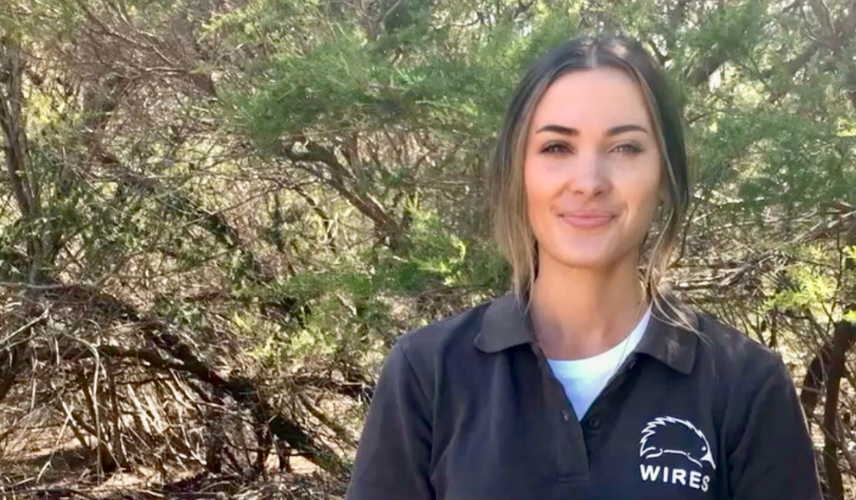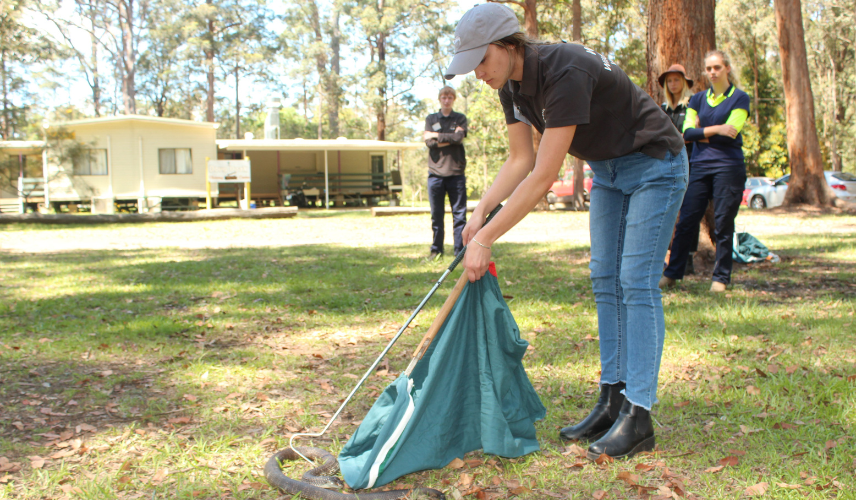
Interview with WIRES Training and Development
Friday, February 21, 2025
Jenn Rhodes - Head of WIRES Training & Development, pictured, gives us a brief insight into the team that develops and delivers training for WIRES volunteers, and for wildlife rehabilitators across Australia.
The team’s purpose is to make sure sick and injured Australian native animals receive the highest standard of care.
Thanks for joining us Jenn. Can you tell us one of the most surprising parts of your role?
Well, I think it’s the diversity!
Australia has such a huge number of unique species, and they often have very specialised rescue and care needs. In the past year we’ve produced courses for the rescue and care of seabirds, lizards and turtles, and in previous years, for raptors, frogs, sea snakes, Tasmanian mammals, macropods, koalas, bats, possums and gliders - you name it we’ve produced a care course for it!
That’s a very impressive list!
Yes, we like to keep busy! At present we have over 35 specialist courses available. We’ve also developed training material for specific wildlife emergencies – Bushfire Emergency Response and Heat Stress Events for Flying Foxes for example.
As weather events become more frequent and extreme, responding to these emergencies is going to become more and more critical for our most vulnerable species. It's so important our volunteers are equipped with the skills and knowledge to do that.
What do you think our most important new course was this year?
For me it was our Understanding Pain in Wildlife course. Alleviating the pain and minimizing stress for wildlife will always be critical for their welfare, but we also know the less stress and suffering an animal endures, the better their chances for release back into the wild – so there’s an ecological importance to pain management during rescue and care too.
More than 760 wildlife carers completed that course last financial year, which means those skills are now going to have an immediate positive impact on literally thousands of injured and sick native animals.
That’s great to hear Jenn. Are there any other highlights you’d want our supporters to know about?
Well just that sick, injured and orphaned native animals can’t speak up for themselves. They can’t ask for expert care, they can't ask for pain management. I’m so grateful for the donations we receive, which enable us to provide these wildlife-saving skills to our volunteers. In the past year over 3,600 individual WIRES courses were completed so we know wildlife volunteers really do care deeply about providing the best care possible.
To find out about WIRES Training opportunities please take a look here

Photo credit Salty Dingo. Jenn Rhodes demonstrating how to safely capture a Tiger snake, at a WIRES Snake Handling Workshop
Recent Posts
WIRES launches its first wildlife rehabilitation centre - Mullyang
WIRES Emergency Response in the wake of ex-tropical cyclone Alfred
International Women’s Day Volunteer Spotlight: Shelley
Tropical Cyclone Alfred – Emergency Wildlife Advice
Interview with WIRES Training and Development
Celebrating Women in Science: The Journey of Holly, Wildlife Conservationist and WIRES Team Member
